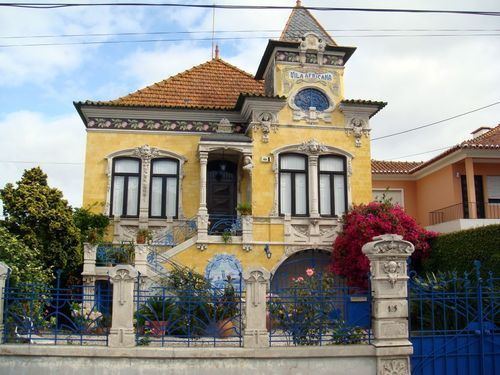Country Portugal Subregion Baixo Vouga Parishes 4 Area 73.48 km² Local time Saturday 11:30 PM | Region Centro Population 38,598 (2011) | |
 | ||
Weather 12°C, Wind N at 8 km/h, 78% Humidity Points of interest Museu Histórico da Vista, Museu Marítimo de Ílhavo, Oficinas de Pintura e Olaria Vis | ||
Ílhavo ([ˈiʎɐvu]) is a municipality located at the Centre of Portugal. The population in 2011 was 38,598, in an area of 73.48 km².
Contents
- Map of Ilhavo Portugal
- General information
- International Relations
- Parishes
- Cities and towns
- Civic information
- Tourism
- References
Map of Ilhavo, Portugal
The municipality of Ílhavo includes four parishes and two cities: Gafanha da Nazaré (about 15,000 inhabitants) and Ílhavo (around 17,000 residents with Gafanha Da Aquém).
General information
Several stories have been gathered as part of the popular history of this city:
Traditionally, the local women — As Ílhavenses — are famed for their great beauty. It is claimed the city was founded by Greek colonists around 400 BC to whom the beauty of "Ílhavenses" women is attributed, but others state that the Phoenician settlers are the ones responsible for that.
Ílhavo's national nickname is "the city of the lamp" (a cidade da lâmpada). According to legend, one Sunday during Mass, one of the most important relics of the church (an oil lamp) was stolen in front of everybody and was never found. The myth continued and the Ílhavenses became known as "the cool ones".
International Relations
Ílhavo is twinned with:
Parishes
Administratively, the municipality is divided into 4 civil parishes (freguesias):
Cities and towns
There are two cities in the municipality.
Civic information
Ílhavo received its rights on 13 October 1296 from King Denis of Portugal and is composed of four parishes. The city lies within the District of Aveiro. On 9 August 1990, it was elevated to the rank of a city. José Agostinho Ribau Esteves of the Social Democratic Party is the Mayor. There are 28,749 people eligible to vote (2006). The municipal holiday is Easter Monday.
Tourism
Within the municipality, there are two villages that are popular in the summertime: Praia ("beach") da Barra, where the tallest lighthouse in Portugal (Farol de Aveiro ou da Barra) is situated and Praia da Costa Nova (Costa Nova do Prado), with its typical houses called Palheiros (they are characterized by façades in wood or concrete, decorated with lively and cheerful colors in alternation with white) and the fish market.
In Barra, one can find the tallest Portuguese lighthouse (62 metres from the ground but 66 metres above sea level). It was built between 1885 and 1893. The light can cast as far as 26 nautical miles out to sea (approx. 48 km).
Ílhavo is deeply connected with the fishing of codfish; with effect most of the captains were original of there. These connections of Ílhavo with the sea can be seen in the Museum Maritímo de Ílhavo, which for besides the building, there has the only side surviving tug of fishing of the cod. The ship makes integrant part of the Museum and provides lodging for temporary exhibitions. The recently renovated Maritime Museum of Ilhavo is dedicated to the White Fleet fisheries and to the Ria de Aveiro fishermen. The main harbor (port) of the region (i.e. Aveiro harbor) is located in Ílhavo municipality.
The city of Ílhavo is famous for his industry of porcelain Vista Alegre, the porcelain company, was founded in the city, where it has its factory.
The city of Ílhavo is known by the famous Bread of Vale de Ílhavo, traditionally handmade and sewed in the firewood oven and also there is the Easter cake or Sweet Bread (with or without eggs) marketed in the heights of the Easter.
The cities of Ílhavo and Aveiro make an urban conurbation and share the lagoon Ria de Aveiro with other nearby municipalities in Baixo Vouga, such as Vagos, Murtosa, Estarreja and Ovar.
